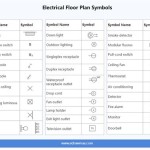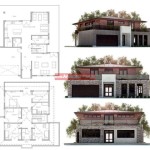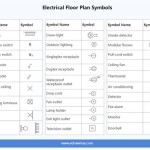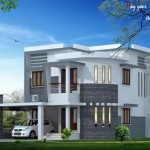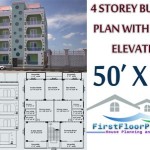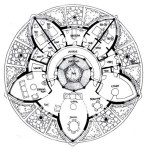House Plans With Vaulted Ceilings
Vaulted ceilings are a coveted architectural feature, adding a sense of grandeur and spaciousness to any home. They elevate the aesthetic appeal and introduce a dramatic flair, transforming ordinary rooms into airy, light-filled spaces. Incorporating vaulted ceilings into house plans requires careful consideration of design, functionality, and structural requirements. This article explores the different types of vaulted ceilings, their advantages, potential drawbacks, and their integration into various house plans.
Several types of vaulted ceilings exist, each offering a unique aesthetic. A barrel vault, the simplest form, resembles a tunnel sliced in half lengthwise, creating a smooth, arched curve. Groin vaults, formed by the intersection of two barrel vaults, add architectural interest and are often used in larger spaces. Ribbed vaults, a variation of the groin vault, feature exposed structural ribs, adding a decorative and historic touch. Cathedral ceilings, often found in great rooms and living areas, follow the roofline's slope, creating a dramatic and expansive feel. Tray ceilings, characterized by a recessed central section surrounded by a perimeter at a lower height, add a touch of elegance and dimension to a room. Finally, shed ceilings, featuring a single sloping plane, are often used in attics or rooms with limited headroom, maximizing the available space.
The benefits of vaulted ceilings extend beyond aesthetics. They create an illusion of greater space, making rooms feel larger and more open. This is particularly beneficial in smaller homes or rooms with limited square footage. High ceilings enhance natural light penetration, reducing the need for artificial lighting and creating a brighter, more welcoming atmosphere. Improved ventilation is another advantage, as the increased volume of air allows for better air circulation and temperature regulation. Furthermore, vaulted ceilings offer opportunities for unique design elements, such as exposed beams, skylights, and decorative lighting fixtures, allowing homeowners to personalize their space.
While vaulted ceilings offer numerous advantages, potential drawbacks should be considered during the planning phase. Increased construction costs are often associated with vaulted ceilings due to the additional materials and labor required. The larger volume of space created by high ceilings can impact heating and cooling efficiency, potentially leading to higher energy bills. Maintenance can also be more challenging, as cleaning and repairs may require specialized equipment or professional assistance. Furthermore, acoustics can be affected, with sound echoing more readily in larger spaces. Careful consideration of these factors is essential to ensure the benefits outweigh the potential drawbacks.
Integrating vaulted ceilings into house plans requires thoughtful design. In open-concept floor plans, vaulted ceilings can define different living areas while maintaining a sense of continuity. In single-story homes, they create a sense of grandeur and spaciousness, elevating the overall aesthetic appeal. For homes with a second story, strategic placement of vaulted ceilings can prevent the upper level from feeling cramped or confined. Consider the room's function and desired atmosphere when selecting the type of vaulted ceiling. For instance, a barrel vault may be suitable for a hallway or corridor, while a cathedral ceiling is often preferred for a living room or great room.
Various house plans effectively incorporate vaulted ceilings. Ranch-style homes often feature vaulted ceilings in the living area to create a sense of openness and spaciousness. Craftsman-style homes may incorporate exposed beams in vaulted ceilings to enhance the natural and rustic aesthetic. Contemporary homes often utilize shed ceilings to create dramatic angles and maximize natural light. Mediterranean-style homes may feature groin vaults to add architectural interest and complement the overall design. The choice of vaulted ceiling should complement the architectural style and enhance the home's overall aesthetic appeal.
Lighting considerations are crucial when designing rooms with vaulted ceilings. Recessed lighting can provide ambient illumination while highlighting architectural features. Pendant lights can add a decorative touch and create a focal point. Skylights can introduce natural light, reducing energy consumption and enhancing the sense of spaciousness. Careful placement and selection of lighting fixtures are essential to create a balanced and well-lit space.
Incorporating vaulted ceilings into house plans offers a unique opportunity to enhance the aesthetic appeal and functionality of a home. By understanding the different types of vaulted ceilings, their advantages, and potential drawbacks, homeowners can make informed decisions that align with their design preferences and lifestyle needs. Careful consideration of lighting, architectural style, and room function ensures that vaulted ceilings become a seamless and visually stunning addition to any home.

Mountain Or Lake House Plan With Outdoor Fireplace And Vaulted Ceilings 92328mx Architectural Designs Plans

One Story House Plan With Vaulted Ceilings And Rear Grilling Porch 70582mk Architectural Designs Plans

Cathedral Ceiling House Plans Small W High Ceilings

Small House Plan With Vaulted Ceiling All Bedroom Windows Directed In The Same Direction Floor Plans Building

Rustic House Plans Our 10 Most Popular Home

Lake House Plan With Cathedral Ceiling And Ont Master Suite 3417

Cathedral Ceiling House Plans Small W High Ceilings

5 Bedroom Rustic 2 Story Mountain Home With Vaulted Ceilings Floor Plan

One Level House Plan With Cathedral Ceilings In Living Room 860029mcd Architectural Designs Plans

Plan 025l 0040 The House

